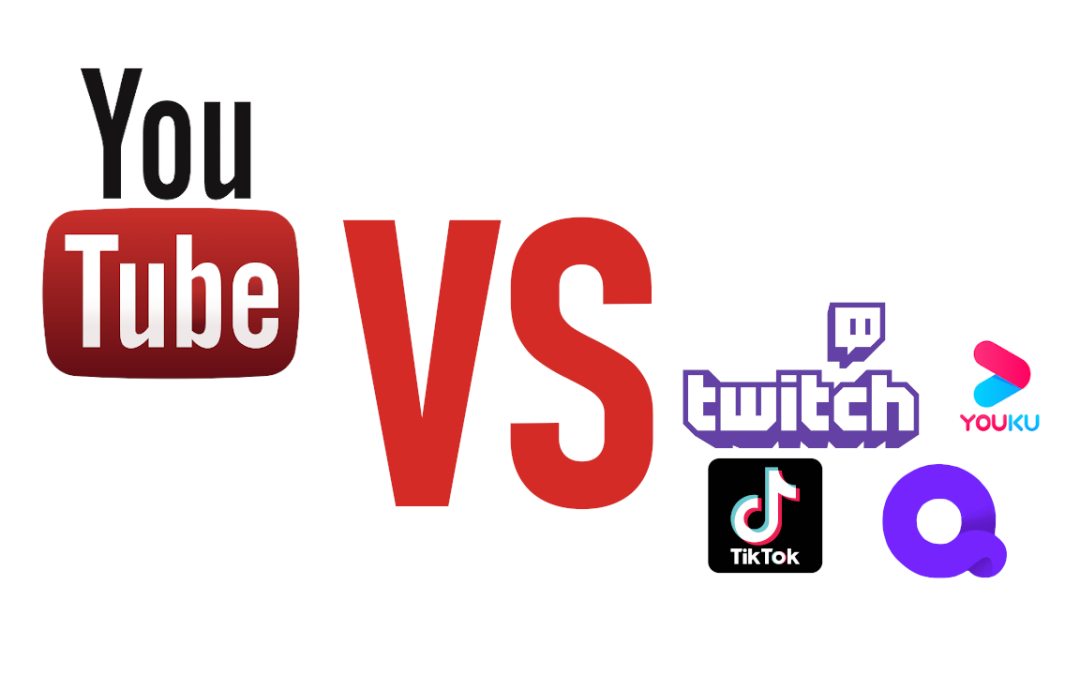YouTube is a monstrously large platform. Each month 1.7 billion unique users visit, amounting to 14.3 billion total visits each month. Whichever way you cut it that’s a lot of people. This makes YouTube the second most visited website, being second only to Google. It’s no coincidence that Google is the parent company of YouTube. More than 80 percent of internet users have visited YouTube at least once. YouTube shorts alone get 15 billion views daily. And that’s nothing compared to other sections of the platform. Marketers know this, but while YouTube is larger and more effective than almost any other platform, it is often neglected.
Those who do use YouTube often fail to understand how to do so with skill. But that’s a story for another day. For now we will explore why YouTube has no actual competitors. There are of course other video platforms like Vimeo and Dailymotion. But their views and users are so far behind YouTube that they can simply never hope to compete. But will another platform emerge and seriously challenge the dominance of YouTube?
There are two major reasons why YouTube is the only dominant video platform:

The technical side
Perhaps the greatest asset YouTube has is a technical edge over any other video service. This of course comes both from it being part of google and it having been in operation since 2005. With 500 hours of content being uploaded to YouTube every minute, an enormous amount of capital is needed to ensure that no prohibited content is allowed to slip by. That capital comes both in the form of money and human resources. YouTube currently employ more than 5000 employees, many of which are engineers constantly working to build and improve the famous YouTube algorithm.
Really it’s a collection of multiple algorithms which act to increase viewer duration and encourage users to stay on the site. Just the bandwidth required by YouTube would bankrupt most businesses. Not only does all this take a lot to put together, it means the head start YouTube has on competitors makes it highly improbably any will catch up. At least not in the near future.
The User Side
YouTube is simply the place to be when it comes to user created video content. It’s where most of the large creators are, meaning the people who are inspired by those creators also see YouTube as the best place to upload their own future content. This creates a self feeding loop that gives birth to perpetual growth. Once the cycle is in motion it is incredibly difficult to break it. The YouTube brand is known world wide and seen as the default option for videos of all lengths. With so many creators there is an abundance not only of the content we can consume, but the type of content also.
You can find almost anything on YouTube from long form podcasts to short form perfume reviews. It speaks volumes that everyone knows what I mean when I inform them I’m a professional YouTuber. People everywhere seem to know exactly what that means. So that’s the second major obstacle that any potential competitor would need to overcome. How exactly do they build a brand that can challenge the dominance of YouTube. And how do they actually attract creators on mass.
These two factors make it almost impossible for anyone to directly compete against YouTube. It is simply too large and too well known for anyone else to have a chance. However, it would be realistically possible for a future competitor to start of relatively small – in a niche they can dominate and do better than YouTube in that one area. Then once that niche is tightly in their control, expanding to take on YouTube more directly is a feasible strategy. I have a few video platforms in mind that could do just that, with a little luck and a lot of funding.
Possible Future YouTube Competitors
Spotify

As mentioned before, any potential platform would need to already be a major brand. Otherwise the top creators would simply not be attracted to it as their first port of call. And example would be when Vine shut down. Now with no home, many of the top Vine stars flocked to YouTube. With that in mind, Spotify might soon be in a position to steal some of YouTube’s thunder. Founded just one year after YouTube, Spotify is a huge streaming platform, known mainly for it’s music. The platform has 180 million paying subscribers. There are also more than 230 million non paying users, giving the platform massive influence. In recent years Spotify has built on it’s success with music, signing deals with major podcasts. Bringing major podcast hosts to Spotify has included video, with a functioning video interface much like YouTube.
Some of the larger podcasts on Spotify include the Joe Rogan Experience, Stuff You Should Know, and Call Her Daddy. Now with countless long form video podcasts it’s not unthinkable that Spotify would open it’s doors to other kinds of video content too. If anything it seems like the next logical step for them. With around 7 million artists already on the platform, I’m certain many YouTubers would be drawn to Spotify if it meant exposure to a new audience. It is entirely possible they voluntarily decide not to compete with YouTube. Perhaps they focus on owning the podcasting niche, rather than push into video sharing territory. It would likely be more cost effective to do so. Still, there is every chance they pose a threat to YouTube in the coming years.
Twitch

Perhaps the most obvious of all possible YouTube competitors is Twitch. Twitch is pretty straight forward. It’s a streaming platform owned by Amazon. Like YouTube in many respects – it’s structure, user interface, and even much of the content found there. Founded 10 years ago, Twitch was unashamedly inspired by YouTube, having channels and subscribers. It’s partner program too was modelled on YouTube. So it’s no surprise Twitch rapidly expanded, filling the void in online video streaming. By 2015 Twitch was getting more than 100 million views per month. Impressive considering it was purchased by Amazon one year earlier for 970 million dollars. Today Twitch has almost 150 million monthly active users, making it an ideal candidate to take a bite out of YouTube’s dominance.
As well as direct streaming, they allow users to keep videos on their channel, in a style strikingly like YouTube. When Twitch first introduced this feature many believed it was a sign they were declaring themselves a direct competitor to YouTube. But that was several years ago and no further progress has been made. Yet just like Spotify, there is more than a good chance it will soon lean more in that direction.
TikTok

TikTok has what no other on this list does: momentum. Founded in 2016, TikTok grew slowly and steadily until 2019, when the pandemic catapulted it to new heights. In 2020 it was the world’s third fastest growing brand, and in 2021 it was the most visited website, even more so than google. For a relatively young app catering to relatively young people to be able to achieve this is astonishing. TikTok is geared towards short form video, and for a while all content was limited to 60 seconds or less. Now it’s common to find videos over a minute, with some being up to 10 minutes long. With the increase in video length and users, TikTok is in the process of being a competitor to YouTube whether they like it or not. As always, older generations are also now being drawn to the app, and marketers accordingly.
Apple TV+

This one is a moonshot choice. I really do not expect Apple Tv to make any headway when it comes to user generated content. More of a competitor to Netflix, Apple TV+ hosts a range of original tv shows and films. It was only launched in 2019 but already has around 20 million subscribers. Being backed by one of the world’s largest companies, you never know.

